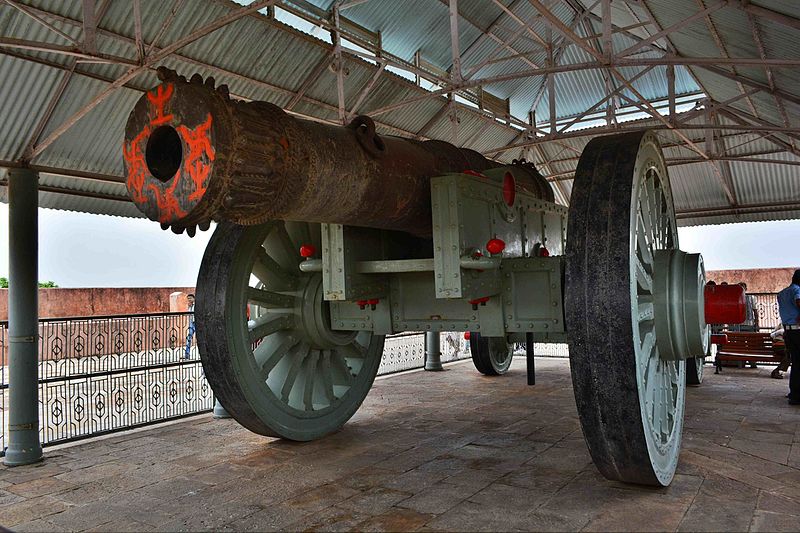On the 193rd Gunners Day #IndianArmy here are some majestic artilleries made in India in medival age.
Malik-i-Maidan
Weighing over 55T it was the largest cannon of the world ! Made in Ahmednagar captured by Bijapur and then Aurangzeb...had extraordinary metallurgy
Malik-i-Maidan
Weighing over 55T it was the largest cannon of the world ! Made in Ahmednagar captured by Bijapur and then Aurangzeb...had extraordinary metallurgy

Jaivana
Made during reign of Jai Singh II it was the largest cannon on wheels ! Weighing over 50T had a range of more than 35 km.
Made during reign of Jai Singh II it was the largest cannon on wheels ! Weighing over 50T had a range of more than 35 km.

Kalal Bangadi
It is not name of a specific cannon but a series ! Weighing upto 22T the cannons were made by advanced technology forging casting and welding ! And it was a muzzle-loading artillery. These were made by possibly timeline of Peshwa Bajirao Ballal
It is not name of a specific cannon but a series ! Weighing upto 22T the cannons were made by advanced technology forging casting and welding ! And it was a muzzle-loading artillery. These were made by possibly timeline of Peshwa Bajirao Ballal

Rajagopala Beerangi
It was fourth largest cannon ever fired. Made during reign of Raghunatha Nayak it was an example of advanced metallurgy in medival India.
It was fourth largest cannon ever fired. Made during reign of Raghunatha Nayak it was an example of advanced metallurgy in medival India.

Dalmadal
It was made in Bengal during reign of Hambir Malla Dev and was used in battle by Raja Gopal
It was made in Bengal during reign of Hambir Malla Dev and was used in battle by Raja Gopal

Jahankosha
Another cannon made in Bengal during the reign of Shah Jahan the wonder was a beautiful and exquisite art
Another cannon made in Bengal during the reign of Shah Jahan the wonder was a beautiful and exquisite art

Bachchawali Tope
Originally built by whom is unknown but possibly older than any one in the thread , probably it was too made in Bengal and it was used to strike enemies as well. It weighs more than 7T.
Originally built by whom is unknown but possibly older than any one in the thread , probably it was too made in Bengal and it was used to strike enemies as well. It weighs more than 7T.

Rockets
The thread is incomplete without Mysorean Rockets! Though it was being built much earlier Tipu Sultan used the most advanced version extensively and earned admire after decisive victory at the Battle of Pollilur. They were iron cased rockets with a range of 2+ km.
The thread is incomplete without Mysorean Rockets! Though it was being built much earlier Tipu Sultan used the most advanced version extensively and earned admire after decisive victory at the Battle of Pollilur. They were iron cased rockets with a range of 2+ km.

• • •
Missing some Tweet in this thread? You can try to
force a refresh






















